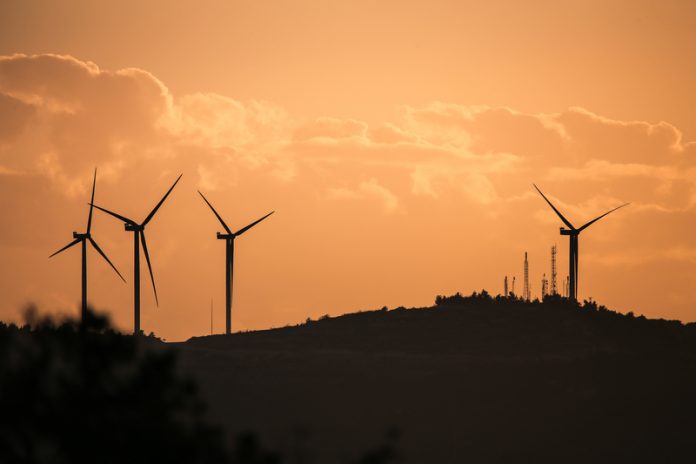Science and technology innovation is a crucial driver for economic national progress and growth in Taiwan. As an example of National Sci-Tech Programmes in the country, we take a look at the National Energy Program and the call for the country to achieve 100% renewable by 2030
In the knowledge-based economy of today, science and technology (S&T) innovation have become a crucial driver for economic national progress and growth. In light of this, the Ministry of Science and Technology (MOST) in Taiwan was created in March 2014 and the organisational structure was geared to facilitating stronger links between research in the academic and industrial development. Prior to this, the equivalent organisation was known as the National Science Council (NSC) of the Executive Yuan, which dates back to February 1959.
In addition, we know that MOST will carry on the NSC’s tradition of innovative programmes and measures – and bringing academic research a step closer to the needs of industry. MOST believe it can boost Taiwan’s industrial and academic competitiveness at the international level, by employing an entrepreneurial and innovative spirit, as well as encouraging creativity in S&T. 1
One of the National Sci-Tech Programmes in Taiwan that the MOST website draws our attention to is the National Energy Program (NEP-I) 2. By way of an introduction, we know that Phase I of the NEP-I was set up by a Resolution from the Energy Policy & Technology Development Working Group of the Executive Yuan. In addition, 15 energy technology-related development programmes were drafted during November 2007.
The website of NEP-I draws our attention to the four focus areas for future energy programmes, as well as the 2011 disaster at the Fukushima nuclear power plant and also, the global financial crisis.
“NEP-1 established four directions for future energy programmes: energy efficiency, energy usage & energy sustainability, renewable energy development & utilisation, and formulation & evaluation of energy technology development strategies. “In March 2011, the unfortunate disaster at the Fukushima nuclear power plant saw a major change in dealing with energy and energy projects.
“In addition, the global financial crisis of the European Union, the U.S. subprime mortgage calamity, etc., along with the constant political threat of terrorists and an increasing demand for energy and material resources in Asia as well as the burst of the bubble from the overinvestment of photovoltaic and LED industries, have forced a new paradigm shift with regards to energy and energy resources allocation.”3
We know that when it comes to energy policy in Taiwan, there are a number of goals, such as improving energy efficiency and reducing dependence on imported energy. Another is to improve the international competitiveness of alternative energy industries. Helping build a smart grid system and developing a smart grid technology industry in Taiwan is also a priority.
While there are a number of other goals for energy policy, let’s just focus on one here that concerns developing smart offshore wind power and ocean energy technology industries. In the view of NEP-I, they want to strengthen the development of offshore wind and ocean power and, “realise a domestic power production of 2.1 billion kWH and carbon reductions of 1.3 million tons by 2020.”
The vision of the Offshore Wind Power and Ocean Energy Master Program is, “increasing national energy independence, reducing emissions and damage and establishing Taiwan’s offshore wind power industry chain.” This vision combines university, research and industry resources, plus it integrates concepts for pioneering applications and builds industry consensus to propose development targets for offshore wind power industry, break new ground in the development of offshore wind power and ocean energy technologies, and coordinate solutions from academic and research institutions. 4
Achieving 100% renewable energy by 2030
Perhaps this vision will help with the recent recommendation that Taiwan should introduce more policies to accelerate its energy transition, with the suggested goal of achieving 100% renewable energy by 2030. An internationally renowned energy and climate advisor advised this back in August 2018. Hans-Josef Fell, Founder and President of the Berlin-based Energy Watch Group says, “transiting to 100% renewable is not a faraway target. It is the main strategy in many nations.”
We know that President Tsai Ing-wen has promised to decommission the country’s nuclear power plants, which currently generate 9.3% of electricity. By 2025, the plan is to achieve an energy mix that is 50% liquefied natural gas, 30% coal and 20% renewable energy, which today accounts for 4.9%. Fell draws our attention to the example of Germany who has done remarkably well in the move towards renewable energy. “Now renewable energy is cheap and goes faster. If this doubling goes on, we will have 100% renewable energy by 2030 in Germany. It’s possible. I believe it will come”, he says. Fell underlines the need to diversify sources of renewable energy to balance fluctuating power supply, based on wind and solar power. 5
In closing, it’s worth relating the energy areas discussed in this article as an excellent example of science and technology (S&T) innovation becoming a crucial driver for economic national progress and growth which is a key policy aim of the Ministry of Science and Technology (MOST) in Taiwan.
References
3 http://www.nepii.tw/language/en/about-nep-ii/introduction/
4 http://www.nepii.tw/language/en/about-nep-ii/overall-goals-and-expected-benefits/
5 http://focustaiwan.tw/news/aeco/201808020029.aspx
Open Access Government











